
|
Astronomy Picture Of the Day (APOD)
 Fermi Science Finals
Fermi Science Finals
22.07.2018
The Fermi Science Playoffs celebrate 10 years of the Fermi Gamma-ray Space Telescope's exploration of the high-energy universe. Surviving all early rounds of voting, these two finalists in the competion square off at last.
 Planck Maps the Microwave Background
Planck Maps the Microwave Background
21.07.2018
What is our universe made of? To help find out, ESA launched the Planck satellite from 2009 to 2013 to map, in unprecedented detail, slight temperature differences on the oldest optical surface known -- the background sky when our universe first became transparent to light.
 Apollo 11 Landing Site Panorama
Apollo 11 Landing Site Panorama
20.07.2018
Have you seen a panorama from another world lately? Assembled from high-resolution scans of the original film frames, this one sweeps across the magnificent desolation of the Apollo 11 landing site on the Moon's Sea of Tranquility.
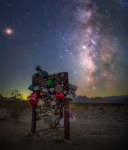 The Teapot and the Milky Way
The Teapot and the Milky Way
19.07.2018
The recognizable stars of the Teapot asterism in the constellation Sagittarius posed with the Milky Way over Death Valley, planet Earth on this quiet, dark night. The surreal scene was appropriately captured from Teakettle Junction, marked by the wooden sign adorned with terrestrial teapots and kettles on the rugged road to Racetrack Playa.
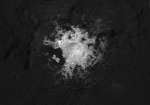 Cerealia Facula
Cerealia Facula
18.07.2018
Cerealia Facula, also known as the brightest spot on Ceres, is shown in this stunning mosaic close-up view. The high-resolution image data was recorded by the Dawn spacecraft, in a looping orbit, from altitudes as low as 34 kilometers (21 miles) above the dwarf planet's surface.
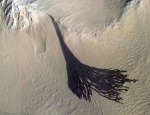 Dark Slope Streaks Split on Mars
Dark Slope Streaks Split on Mars
17.07.2018
What is creating these dark streaks on Mars? No one is sure. Candidates include dust avalanches, evaporating dry ice sleds, and liquid water flows. What is clear is that the streaks occur through light surface dust and expose a deeper dark layer.
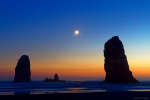 Moon and Venus over Cannon Beach
Moon and Venus over Cannon Beach
16.07.2018
What's that spot next to the Moon? Venus. Two days ago, the crescent Moon slowly drifted past Venus, appearing within just two degrees at its closest. This conjunction, though, was just...
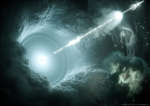 Neutrino Associated with Distant Blazar Jet
Neutrino Associated with Distant Blazar Jet
15.07.2018
With equipment frozen deep into ice beneath Earth's South Pole, humanity appears to have discovered a neutrino from far across the universe. If confirmed, this would mark the first clear detection of cosmologically-distant...
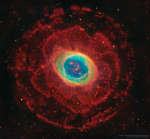 Rings Around the Ring Nebula
Rings Around the Ring Nebula
14.07.2018
There is much more to the familiar Ring Nebula (M57), however, than can be seen through a small telescope. The easily visible central ring is about one light-year across, but this remarkably deep exposure...
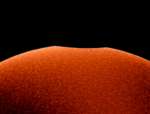 A Nibble on the Sun
A Nibble on the Sun
13.07.2018
The smallest of the three partial solar eclipses during 2018 was just yesterday, Friday, July 13. It was mostly visible over the open ocean between Australia and Antarctica. Still, this video frame...
|
January February March April May June July August September October November December |
|||||||||||||||||||||||||||||||||||||||||||||||||